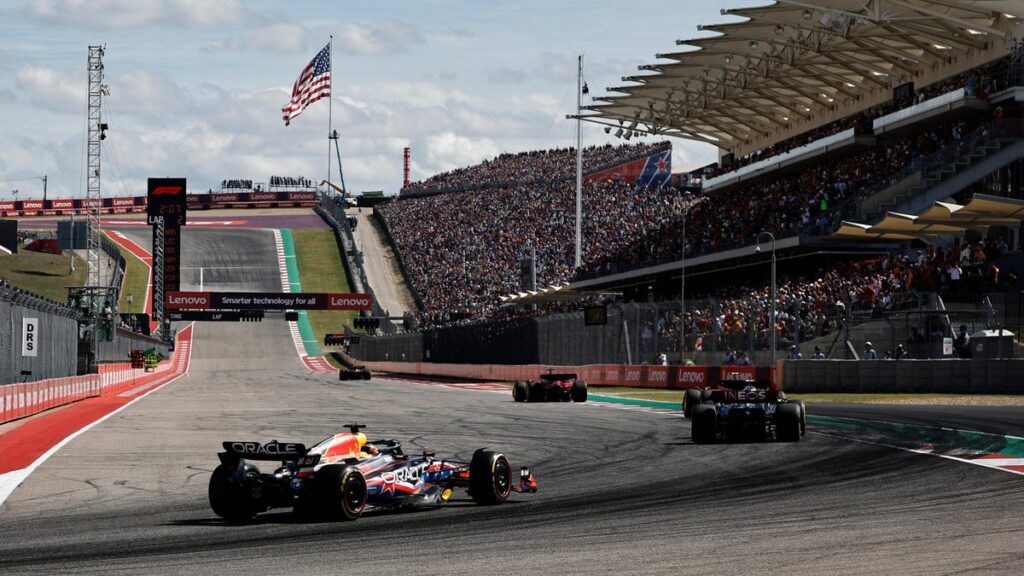Formula 1 Races Feel 'Like A Sound Stage' To Local Fans

Formula 1 has never been this big in America. Last weekend 432,000 fans filled the Circuit of the Americas for the 2023 United States Grand Prix, which would have been unthinkable not long ago. There’s just one problem: F1 doesn’t seem to care much about connecting with its American audience. The American races don’t feel like a part of the American racing landscape, they feel like a one-weekend show that could could happen exactly the same way in any venue anywhere in the world.
It Over and over again in Austin, it became apparent just how big the gap of understanding is between the people who live in the country F1 competed in last weekend and the people who create the product on the track. It wasn’t COTA itself, which has risen admirably to the challenge posed by a sudden jump in attendance; I make a point of visiting with fans any time I’m at an event, and the folks milling about the fan zones confirmed what I’d noticed: The track facilities have improved each year, and while there’s still room to grow, COTA has padded the F1 race with concerts, unique food options, more grandstands, and plenty of activations. One fan referred to the event as “F1 Con,” where fans could gather to nerd out together — it was an apt description.
It was jarring, then, to enter the F1 paddock, where it felt as if I’d been launched into an entirely different world. Being physically in the US was an afterthought, we could have been anywhere else on the F1 schedule. The priority seemed to be remaining as insular and isolated as possible.
Throughout the weekend, I posed a complex question to as many people as I could: How can Formula 1 continue to grow — or at least maintain — its American audience?
I first posited the question to Lewis Hamilton during Thursday’s media press conference. He’s one of the few drivers on the grid who has seen the evolution of America’s interest in F1, and I wanted to know how we could sustain this newfound interest.
“When I used to come out to the States, every time we came out for that one race, you always found yourself educating [fans], repeating yourself,” he said. “Seeing how passionate Americans are for sport, I couldn’t understand how they hadn’t caught the [F1] bug yet.”
He went on to cite a few of the usual concerns: close racing, consistent decisions by the governing body, more grandstands, lower costs. But there was one particular sentiment that caught my attention.
“We need to make sure that when we go into these different countries, we’re also working on making an impact,” he said, “so we’re not just a circus that arrives and leaves a mess behind. We need to look at how we can really leave a legacy in each of these places we go.”
What legacy that would — or should — be was, sadly, a question left unanswered.
Later in the weekend, Jalopnik was one of three publications invited to sit down with FIA President Mohammed Ben Sulayem. We were able to touch on several different topics, but the role of America in motorsport was one of particular interest.
“Is the FIA interrogating the ways that America relates to F1? Because we have very different ways of relating to sports here compared to the international scene,” I asked.
“No. The United States is different, but my sport is different. Formula 1 is different,” Sulayem said. “I am President of the FIA — the whole world of motorsport. We think of the whole world.”Of course, my question can be seen as a fairly conceptual one that deserves to be answered in broad strokes and generalizations — and that’s just what I got from the folks affiliated with F1.
Out in the fan zones, though, the vibe was different. Fans had actual, concrete suggestions. They had specific concerns they felt weren’t being addressed. When I asked how F1 could maintain its American audience, they had actual answers.
“It kind of seems like F1 doesn’t know what America is,” one fan named Jim told me. A former member of the military who asked that his last name be withheld, Jim has traveled the world and got hooked on the sport while he was stationed overseas. He’s since settled down in San Antonio, but he did catch one U.S. Grand Prix in Indianapolis before the event moved to COTA.
“The thing I realized, it’s like [F1] just knows what the local stereotypes are and half-ass plays into them,” he said. “You know how movies used to be filmed on stages in Hollywood that were supposed to feel like other places? That’s what it’s like. It’s like F1 has a Miami sound stage that it races on, but the sound stage is somewhere else.”
That was the most concise distillation of the more general fan sentiment I’d gathered from the 16 different people I chatted with: F1 has a conceptual understanding of the American audience, but not a practical one rooted in fact.
One fan I spoke to wondered if anyone in F1 had actually spoken to Americans. Another said they enjoyed the fact that F1 feels exotic — that they don’t want F1 to try to act more American — but wished the sport looked at the country less like a cash cow and more like a place worth their time.
“I feel bad saying it, but sometimes I wonder if F1 even cares if [the popularity] lasts,” they said, “or if they’re just going to make as much money as they can over, like, four years and then disappear. It’s like they think this is just a passing fad, so they don’t care if they, like, grow roots here.”
It was fascinating; for as much as the predictable nature of the sport has undeniably turned people off, American fans seemed more concerned about the sense of alienation that resulted from their nationality.
“I think if F1 gave us three races that fans could actually afford, it would be different,” Jim said. “It’s just weird that the sport will spend all this money to repave a parking lot and then charge us out the wazoo to roast in it. Miami, Vegas — those don’t really feel like races. Not really. At least [at COTA], I get to feel like I paid to see an actual Grand Prix.”
Long-term, thoughtful investment in America seemed to be the request of the weekend — and of course, that kind of investment will take time. While COTA is a beautiful facility today, it used to feel like an afterthought on the F1 calendar thanks to its bare-bones nature. It grew slowly but steadily; now, after over a decade, it feels like it has truly grown into its FIA Grade 1 designation. However, the potential to flourish always felt like it was there.
Perhaps if fans felt as if F1 were going beyond temporary tracks, the sentiment would be different. Perhaps it would feel like F1 was here for the long run. But right now, some fans feel like they’re waiting to be left behind — and F1 doesn’t seem to know how to convince them to stick around.





